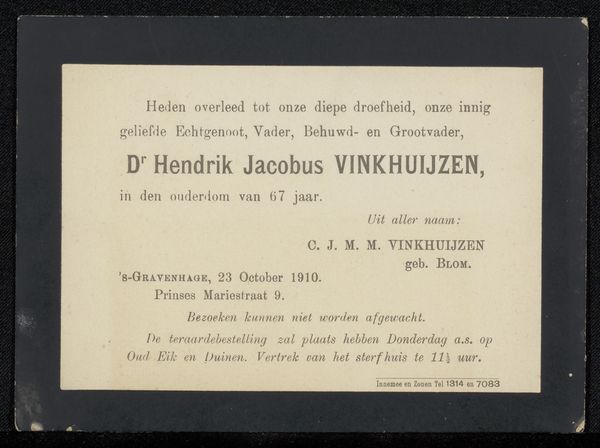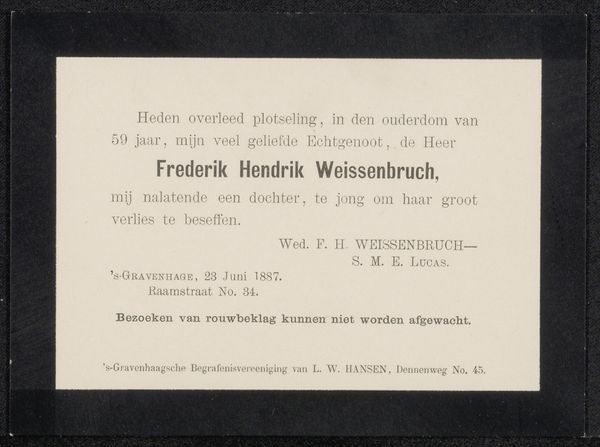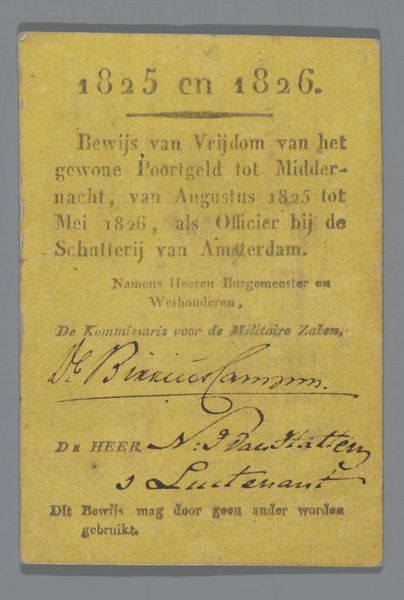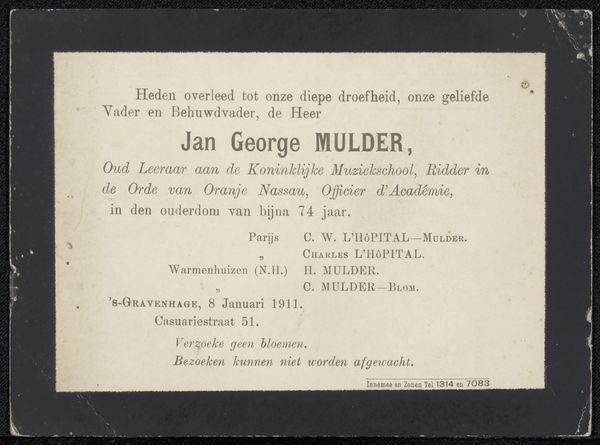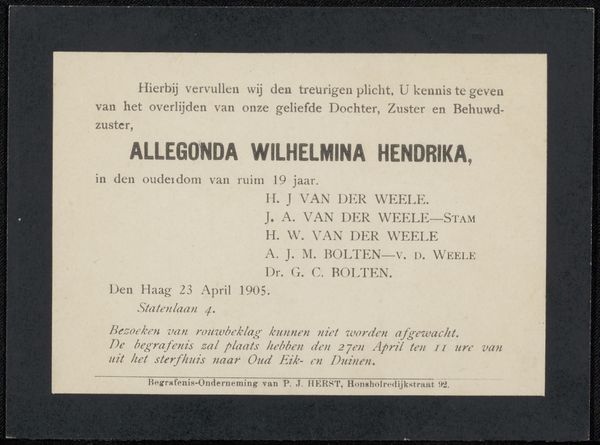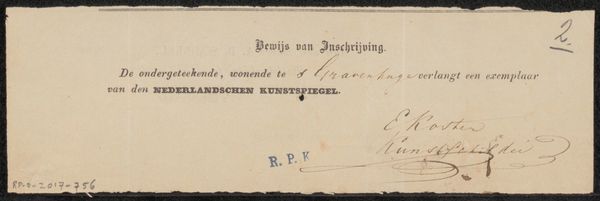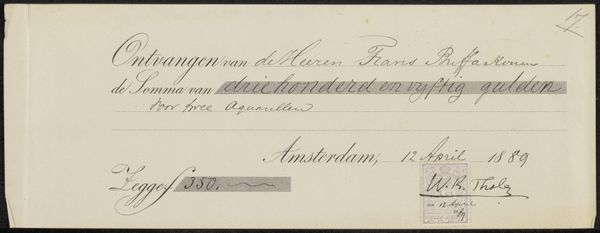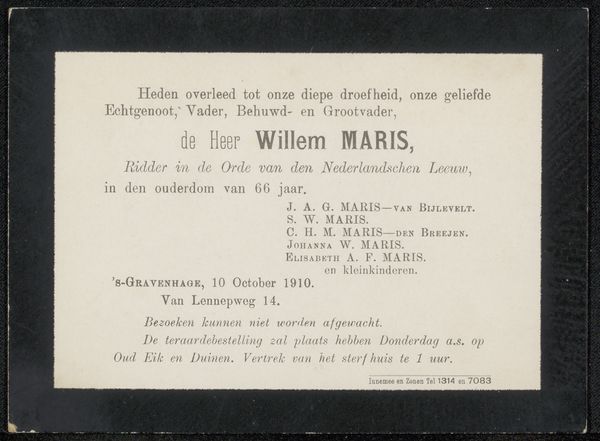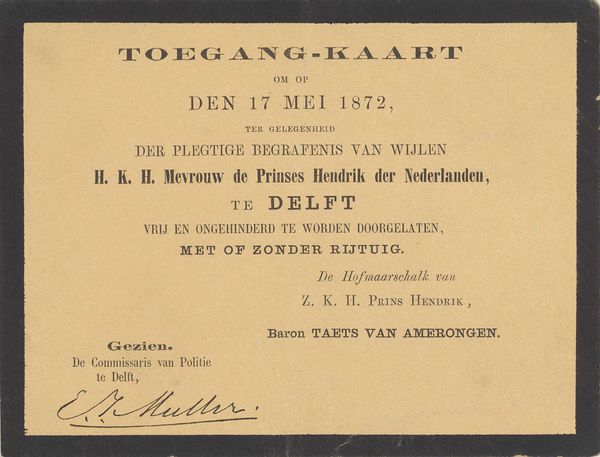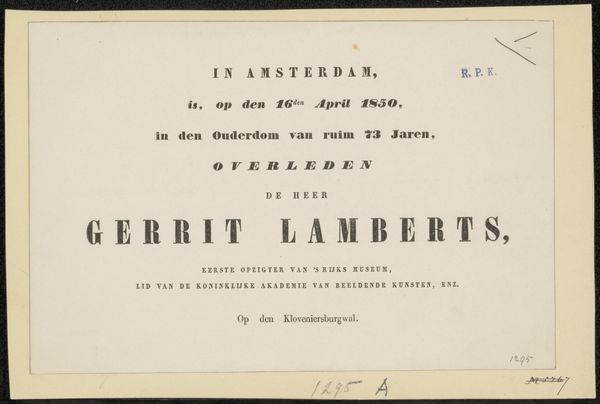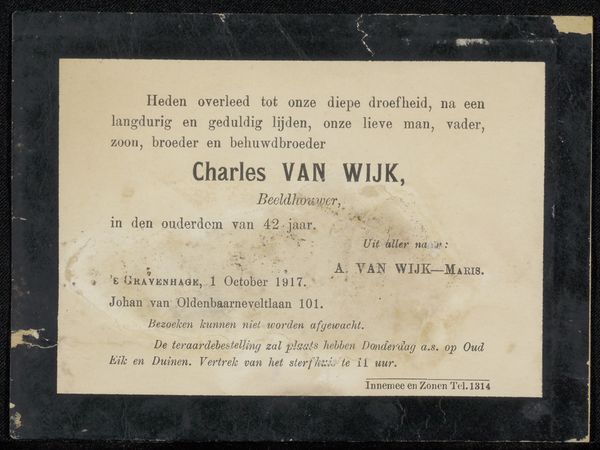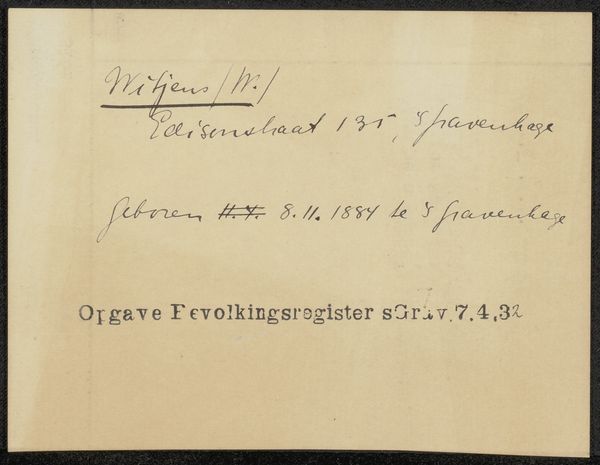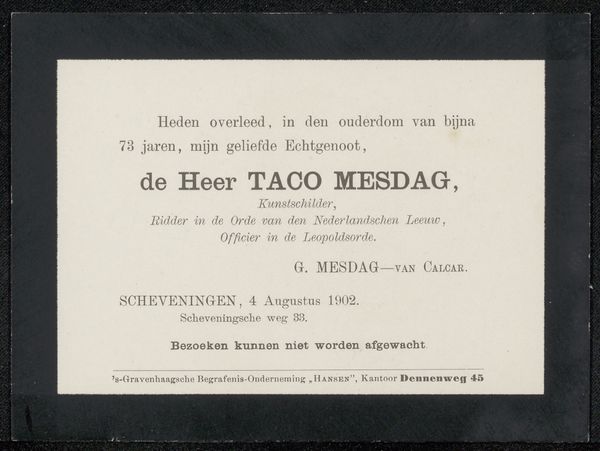
graphic-art, print, textile, paper, typography
#
portrait
#
graphic-art
# print
#
textile
#
paper
#
typography
Copyright: Rijks Museum: Open Domain
Curator: What strikes you first about this small, framed textile at the Rijksmuseum, an item titled “Overlijdensbericht aan Philip Zilcken,” thought to have been made between 1915 and 1917? Editor: An announcement, pure and simple, framed like a miniature portrait. It feels so formal, almost severe, yet intimate. Like a pressed flower between the pages of a favorite book. Melancholy. Curator: Indeed. This "Overlijdensbericht," or death announcement, is an artifact of social custom. Think about the historical context: It reveals how the passing of Hendrik Willem Mesdag was communicated to someone within his social circle, in this case, Philip Zilcken. It tells us a lot about status and ceremony, don't you think? Editor: Absolutely. "Commander in the Order of the Netherlands Lion," "Knight Grand Cross in the Order of Orange Nassau"...all those titles! But, the choice of typeface, the placement of text, all that contributes to a powerful impact. And is this typography woven, maybe on a Jacquard loom, more of an intricate portrait of bereavement than merely a piece of printed communication. The tangible weight of paper and thread amplifies a moment in time. Curator: Right. The format itself – a printed card mounted on textile – elevated it. It transformed the message into a keepsake, or perhaps, as we would interpret it today, even art. How the public and private spheres intermingled becomes interesting. Consider that this would have been a common form of public announcement, yet individually sent and received. Editor: A somber elegance. Like a whisper preserved. What do you make of the very deliberate formality, the titles all proudly mentioned. It reads like a life carefully lived according to duty. The choice to weave is also really fascinating, considering how textiles tend to have more longevity than, say, photographs. It makes it appear that a family wanted to communicate about the passing of an important person on long-lasting materials. Curator: In closing, looking at it today offers a glimpse into a world valuing legacy, formality, and social connections quite unlike ours, don't you agree? Editor: A poignant reminder of how we mark loss. The threads of time bind us all, even across centuries.
Comments
No comments
Be the first to comment and join the conversation on the ultimate creative platform.
